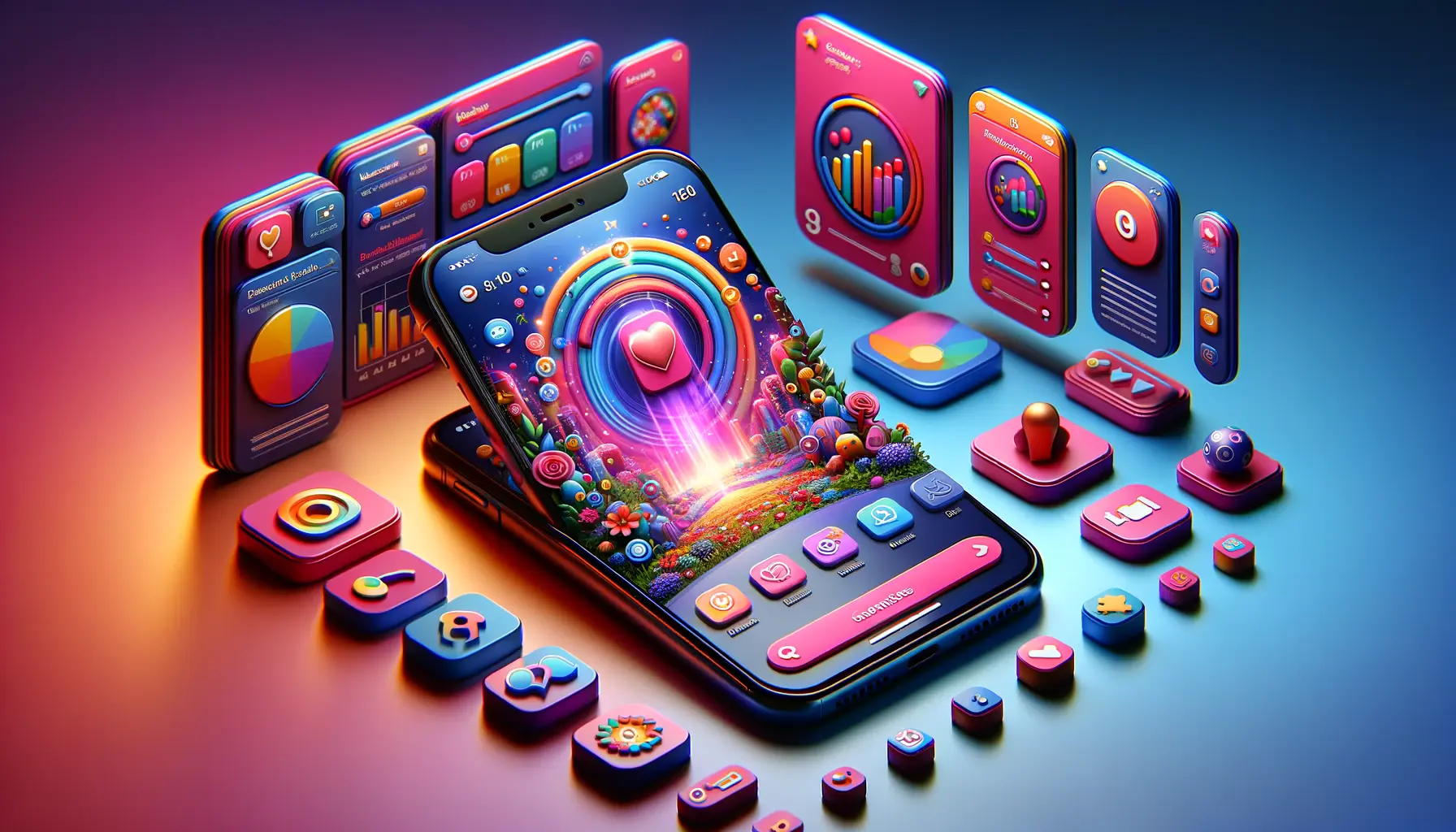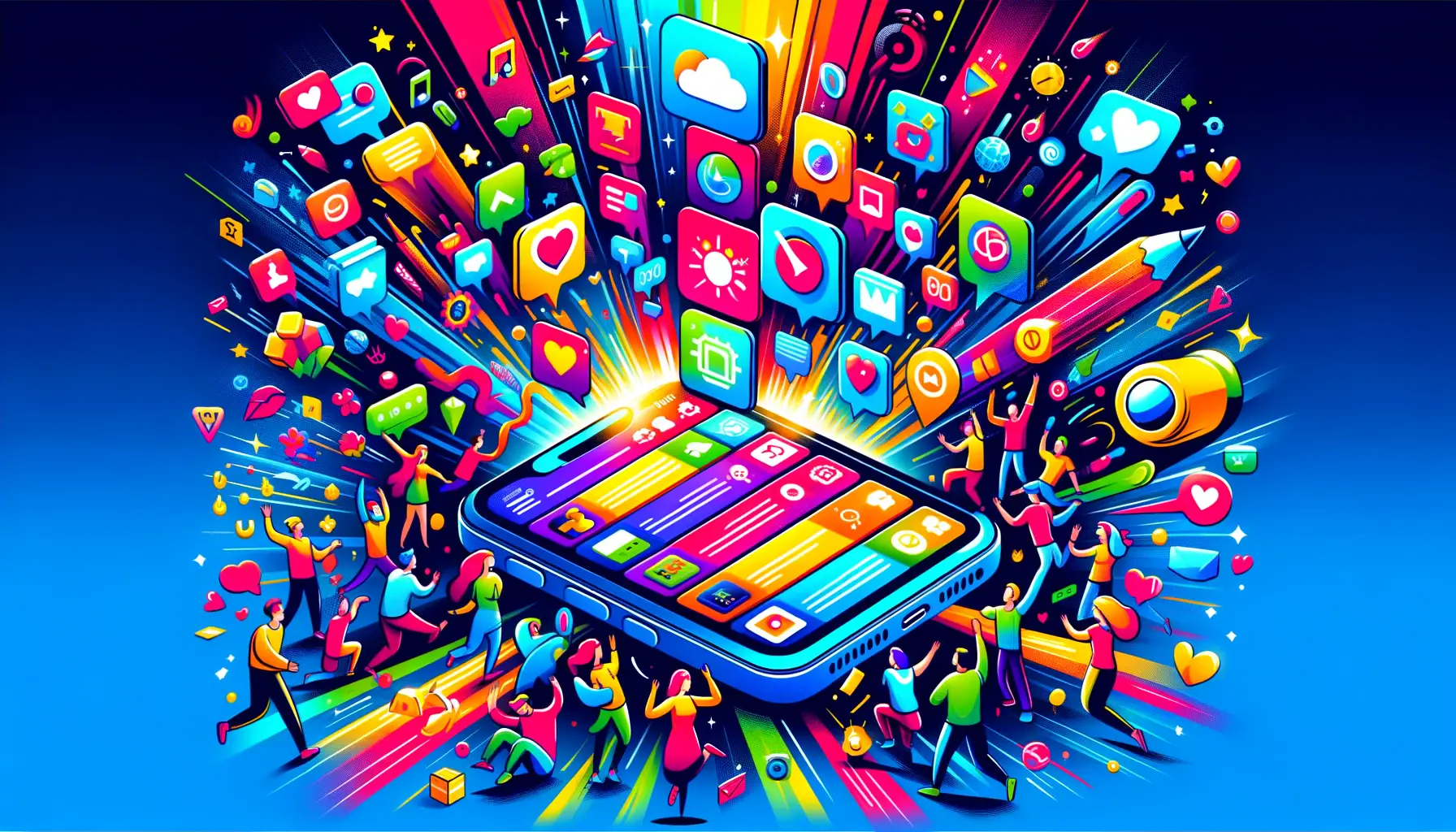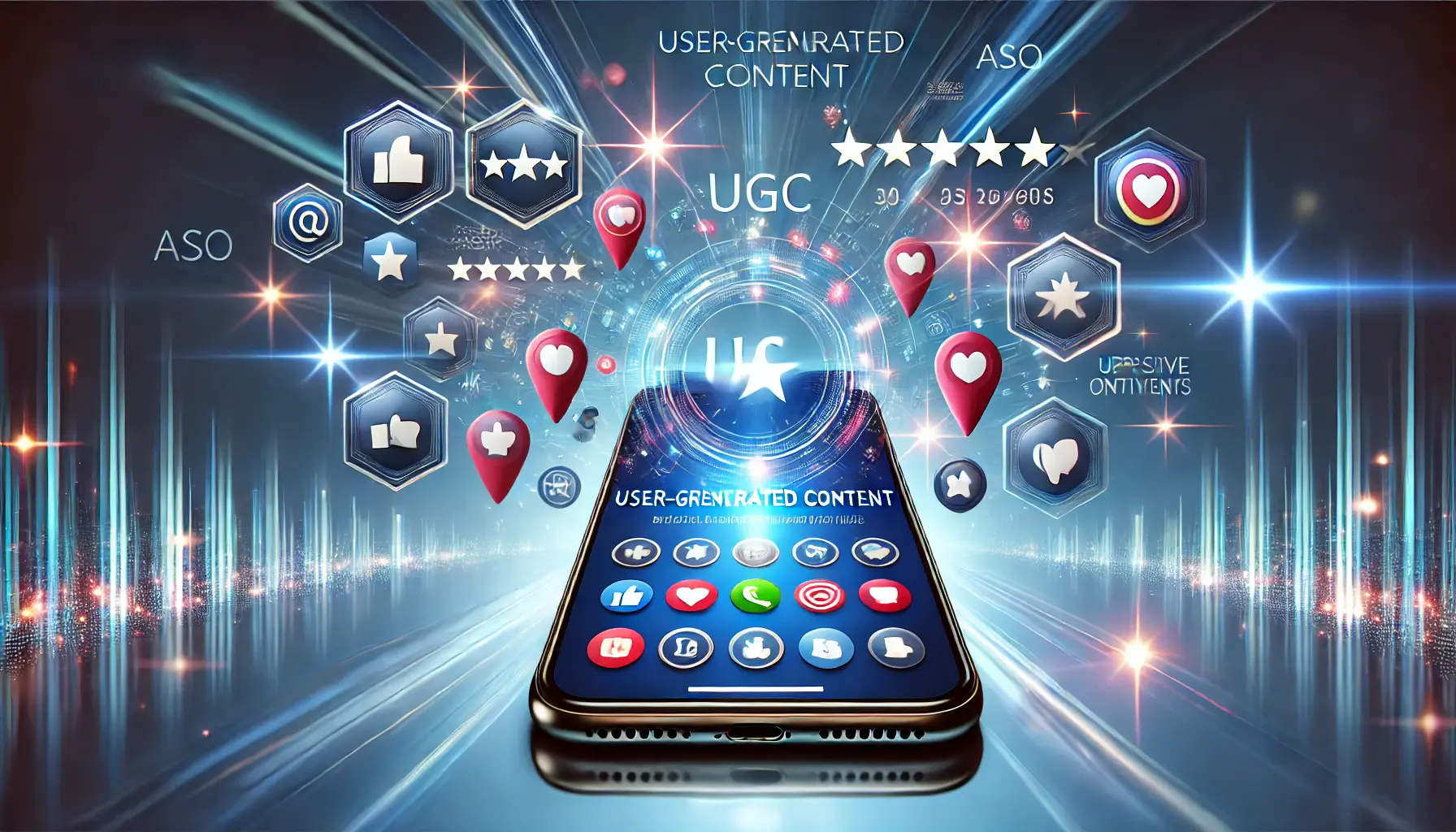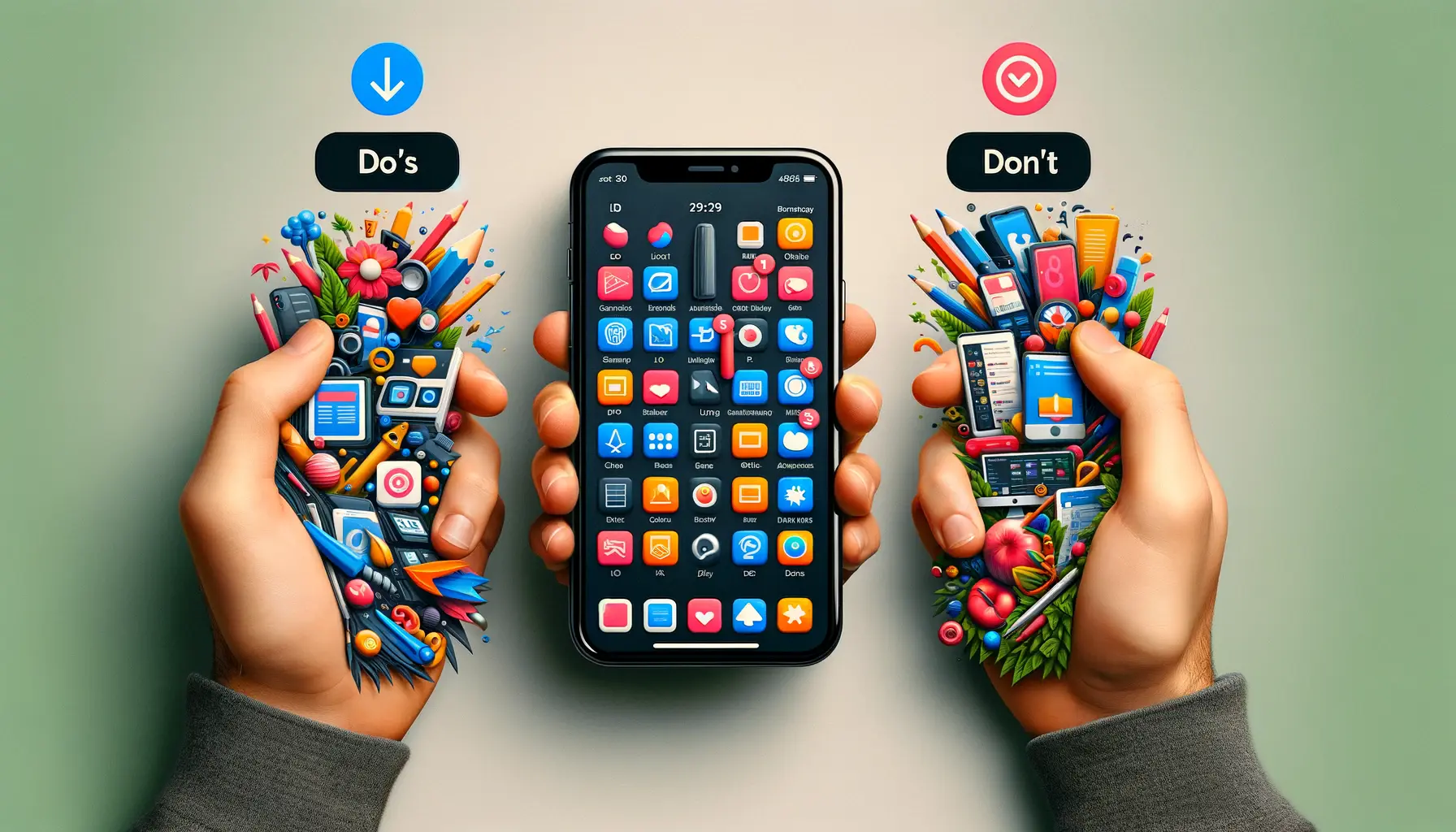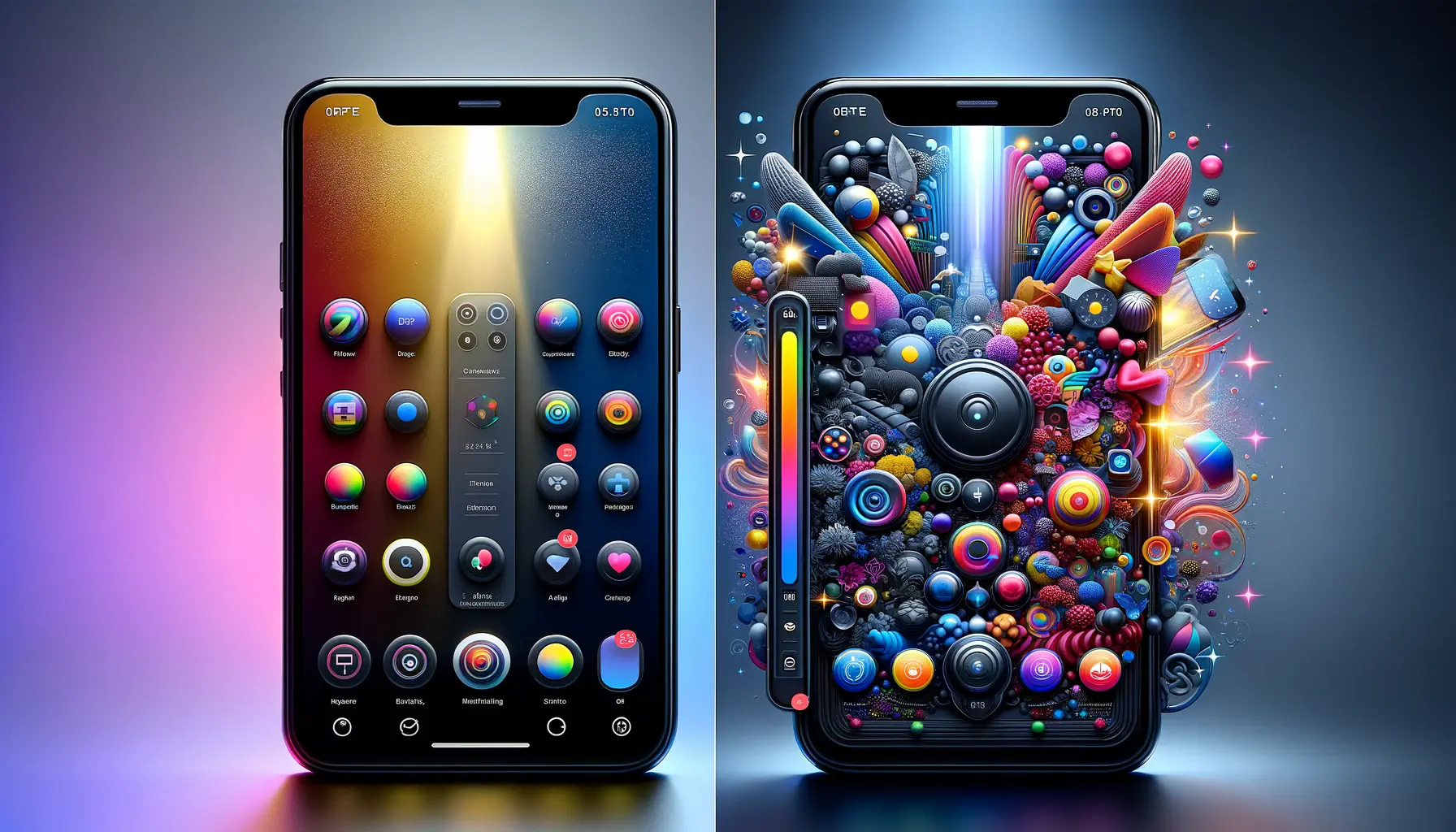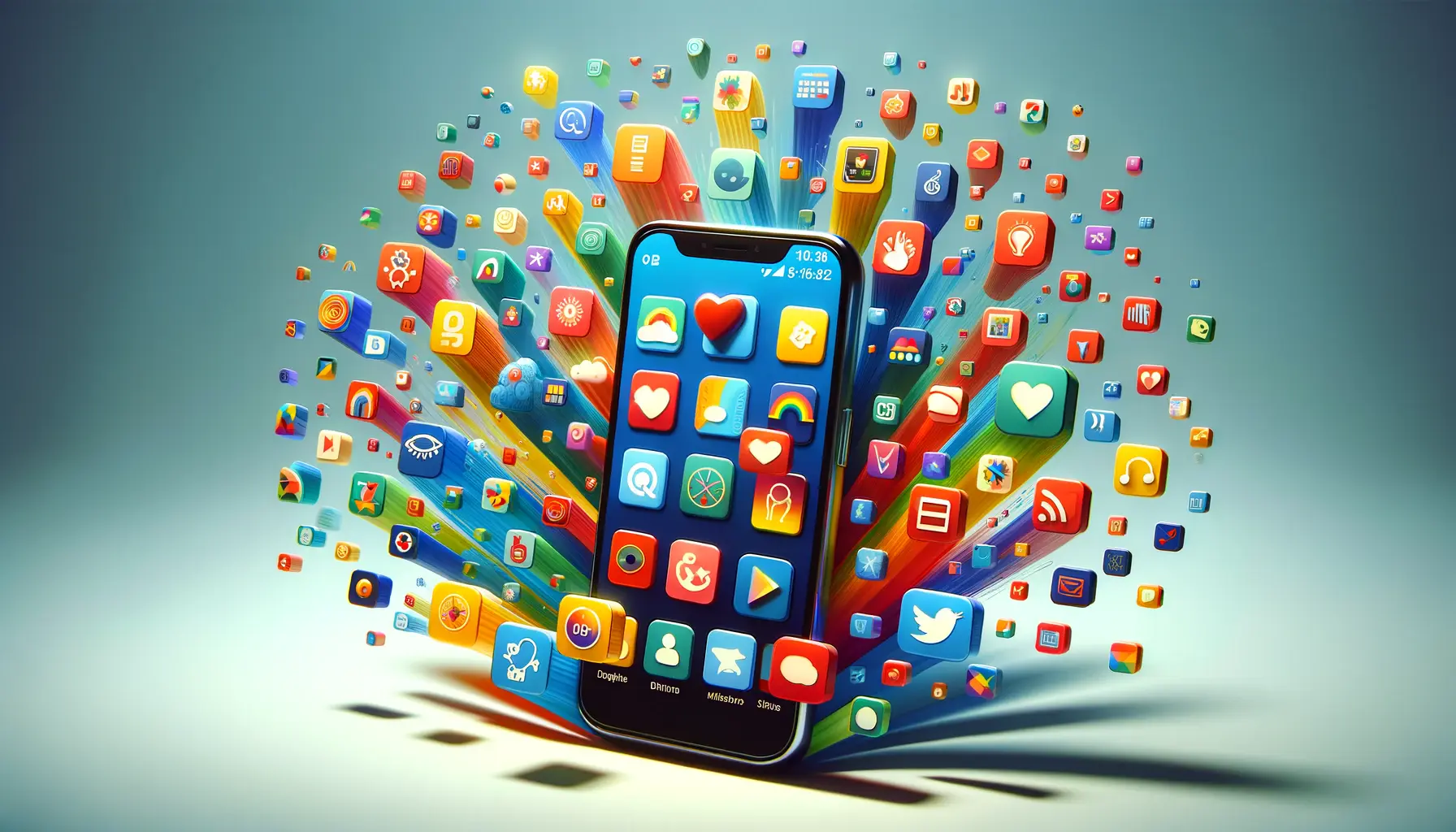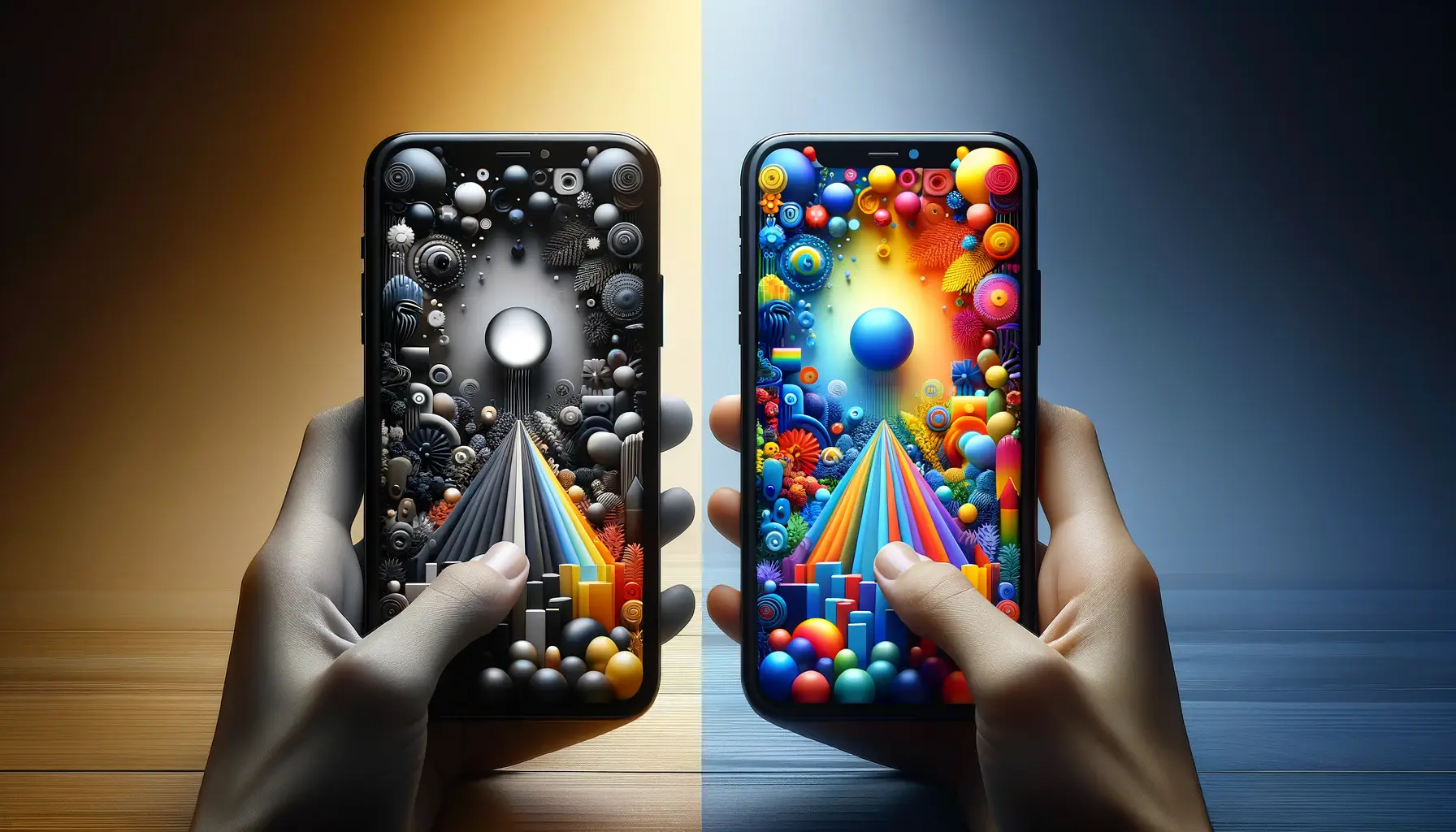App Store Optimization (ASO) plays a pivotal role in ensuring your mobile application stands out in the densely populated digital marketplace.
One of the most effective ASO strategies involves the creation of engaging screenshots for your app store pages.
These visuals not only capture the essence of your application but also serve as a critical first impression for potential users.
In a realm where visual appeal can significantly impact user decisions, crafting screenshots that are both appealing and informative is essential.
Screenshots do more than just display your app’s interface; they tell a compelling story about what users can achieve through your app.
They have the power to communicate the unique value proposition of your application, highlight its best features, and ultimately, persuade users to download it.
This introductory guide aims to delve into the nuances of creating screenshots that not only draw attention but also foster a deeper connection with your prospective app users.
- Understanding the Importance of Engaging Screenshots
- Design Principles for Engaging Screenshots
- Optimizing Screenshots for Different Devices
- Incorporating User Feedback in Screenshot Design
- Leveraging A/B Testing for Screenshot Optimization
- Utilizing Storytelling in Screenshots
- Seasonal and Event-Based Screenshot Updates
- Maximizing Impact with Engaging Screenshots
- FAQs on Creating Engaging Screenshots for App Store Pages
Understanding the Importance of Engaging Screenshots
At its core, the importance of engaging screenshots cannot be overstated.
These visual elements act as a bridge between your app and its potential users, providing a snapshot of what to expect before the download.
Engaging screenshots capture the user’s attention, making them curious to explore what your app has to offer.
It’s about striking the perfect balance between aesthetic appeal and informational value, ensuring that each screenshot contributes to a compelling narrative about your app’s capabilities.
In the context of the app stores, where numerous applications vie for attention, screenshots serve as a critical differentiation factor.
They offer a visual representation of your app’s functionality and design, showcasing its ease of use, innovation, and how it stands out from competitors.
Effective screenshots can significantly enhance your app’s visibility and appeal, driving higher conversion rates and encouraging more downloads.
Key Components of Effective Screenshots
To create screenshots that truly engage and convert, certain elements must be carefully considered.
These include clarity, relevance, and the ability to convey your app’s benefits succinctly.
It’s not just about showing your app in action but highlighting the experiences it enables for users.
This might involve showcasing key features, demonstrating use cases, or even hinting at the app’s user interface and design aesthetics.
Beyond the visual quality, the sequence in which you present your screenshots is equally important.
The first few images should capture the most compelling aspects of your app, as these are the screenshots users are most likely to view.
This strategic arrangement ensures that potential users are immediately aware of what makes your app valuable to them.
Remember, the goal is to make each screenshot a compelling reason for users to want to learn more about your app, driving them towards the download button.
Design Principles for Engaging Screenshots
When designing screenshots for your app store page, certain principles ensure that they are not only engaging but also effective in conveying your app’s value.
Adhering to these design principles can significantly impact the appeal of your screenshots to potential users.
Let’s explore some of the key design principles that can help make your screenshots stand out:
Clarity and Simplicity
The best screenshots are those that communicate the essence of your app quickly and clearly.
Users should be able to understand what your app does at a glance.
This means avoiding cluttered visuals and focusing on the core features of your app.
A clear, simple design helps to ensure that your message is not lost in translation.
Employing a minimalist approach can often be more effective than trying to showcase everything at once.
This means focusing on one key feature per screenshot and using clean, straightforward visuals that highlight that feature’s value.
Visual Appeal
Your screenshots need to be visually appealing to capture and hold the user’s attention.
This involves the use of vibrant colors, high-quality images, and an overall aesthetic that aligns with your app’s branding.
The visual appeal of your screenshots plays a crucial role in making a strong first impression.
Consider the psychology of color and how different colors can evoke different emotions.
Choose a color scheme that complements your app’s interface and branding while also appealing to your target audience’s preferences.
Contextual Relevance
- Show Real-world Usage: Screenshots that depict real-world usage of the app can help users understand how it fits into their daily lives. Highlight scenarios or use cases where your app solves a particular problem or enhances the user’s experience.
- Feature Highlight: Each screenshot should focus on a single feature or benefit of your app. This helps to keep the message focused and makes it easier for users to digest the information being presented.
Text Overlays and Annotations
While images are powerful, combining them with brief, compelling text overlays or annotations can further enhance the message.
Text overlays should be concise, highlighting the key benefits or features shown in the screenshot.
This can help to reinforce the value proposition and guide the user’s understanding of what makes your app special.
Annotations can also be used to draw attention to specific elements within the screenshots, such as buttons, features, or updates.
However, it’s important to use text sparingly to avoid overwhelming the visual appeal of your screenshots.
Incorporating these design principles into your screenshot strategy can significantly increase their impact, making your app more enticing to potential users.
Optimizing Screenshots for Different Devices
Optimizing your app store screenshots for various devices is crucial in ensuring they look appealing no matter where they are viewed.
The diversity in screen sizes and resolutions across devices means that a one-size-fits-all approach may not be effective.
Tailoring your screenshots to fit different devices can enhance their appearance and ensure they convey your app’s value effectively.
Let’s delve into strategies for optimizing your screenshots across various platforms:
Adapting to Screen Sizes
- Understand Platform Requirements: Each app store has its own set of guidelines for screenshot dimensions and file formats. Familiarizing yourself with these requirements is the first step in creating optimized screenshots.
- Create Device-Specific Screenshots: Design separate sets of screenshots for iPhones, iPads, Android phones, and tablets. This ensures that your screenshots look their best on all device screens, showcasing your app’s functionality in the most flattering light.
Highlighting Platform-Specific Features
Some apps offer features or user experiences that are unique to a particular operating system.
Highlighting these platform-specific features in your screenshots can make your app more appealing to users of that platform.
For instance, if your app utilizes a feature exclusive to the latest version of iOS, make sure to create a screenshot that showcases this feature.
This not only highlights your app’s innovative use of platform capabilities but also aligns with the expectations of users familiar with that ecosystem.
Testing and Iteration
- User Feedback: Collect feedback from users on different devices to understand how your screenshots perform across platforms. This can provide valuable insights into any adjustments needed to improve their effectiveness.
- A/B Testing: Implement A/B testing for your screenshots on various devices to see which versions perform better in terms of conversion rates. This data-driven approach allows you to refine your screenshots based on actual user interactions and preferences.
Optimizing screenshots for different devices requires a blend of technical understanding and creative design.
By tailoring your visuals to meet the specific requirements and user expectations of each platform, you can significantly boost the appeal and effectiveness of your app’s presentation in the app stores.
Properly optimized screenshots for different devices not only enhance the visual appeal but also significantly contribute to a positive user experience, leading to higher engagement and conversion rates.
Incorporating User Feedback in Screenshot Design
Listening to your users and incorporating their feedback into your screenshot design can transform the effectiveness of your app store presentation.
User feedback provides invaluable insights into what potential users find appealing or off-putting about your app’s visual representation.
This feedback loop can be a powerful tool in refining your screenshots to better meet user expectations and preferences.
Let’s explore how to effectively gather and utilize user feedback in your screenshot optimization process:
Gathering User Feedback
- Surveys and Questionnaires: Conduct surveys or questionnaires to gather specific feedback on your screenshots from current or potential users. This can be done through email campaigns, social media, or within the app itself for existing users.
- User Testing Sessions: Organize user testing sessions where participants can view and react to your screenshots in real-time. This method provides immediate feedback and insights into user impressions and engagement.
- Analytics and Engagement Metrics: Use app store analytics and engagement metrics to indirectly gather feedback on how users interact with your app store page. High bounce rates or low conversion rates can indicate that your screenshots may not be effectively engaging users.
Implementing Feedback
Once you have gathered user feedback, the next step is to analyze and implement changes to improve your screenshots.
This might involve redesigning visuals, altering text overlays, or changing the order of your screenshots to highlight the most appreciated features first.
Implementation should be done iteratively, with each change followed by further feedback gathering to refine the approach continually.
This iterative process ensures that your screenshots remain dynamic and responsive to user preferences over time.
Tracking Changes and Performance
After implementing changes based on user feedback, it’s important to track the performance of your updated screenshots.
Monitoring key metrics such as conversion rates, download numbers, and user engagement can provide clear indicators of whether the changes have had a positive impact.
Tracking changes and performance allows you to quantitatively assess the effectiveness of incorporating user feedback into your screenshot design.
It helps in validating design decisions and further refining your approach to screenshot optimization.
Remember, the goal of incorporating user feedback is to create screenshots that not only represent your app accurately but also resonate with your target audience, thereby increasing app downloads and user engagement.
Leveraging A/B Testing for Screenshot Optimization
A/B testing is a vital strategy for optimizing your app store screenshots, allowing you to make data-driven decisions that can significantly improve your app’s visibility and appeal.
By comparing different versions of your screenshots to see which performs better in terms of user engagement and conversion rates, you can refine your visual strategy to best meet the needs of your target audience.
Let’s dive into how A/B testing can be effectively used for screenshot optimization:
Setting Up A/B Tests
- Select Variables: Decide on the specific elements of your screenshots you want to test. This could include variations in layout, text overlays, the inclusion of certain features, or even different color schemes.
- Create Variations: Develop at least two versions of your screenshots, each with the variable changes you wish to test. Ensure that each version is distinct enough to measure the impact of the changes effectively.
- Implement Testing Tools: Use app store optimization tools or platforms that support A/B testing of app store assets, including screenshots. These tools can help distribute your screenshot variations to different segments of your audience and collect performance data.
Analyzing A/B Test Results
Once your A/B tests are running, it’s important to collect and analyze the data to understand which screenshot version is more effective.
Focus on key performance indicators (KPIs) such as click-through rates, conversion rates (downloads), and engagement metrics.
The version that performs better on these KPIs indicates a stronger appeal to your target audience.
Analyzing test results not only helps in selecting the most effective screenshots but also provides insights into user preferences and behaviors.
These insights can guide future design and optimization efforts, not just for screenshots but for other app store assets as well.
Iterative Testing and Refinement
A/B testing should not be a one-time activity.
The mobile app market and user preferences are constantly evolving, making it necessary to continuously test and update your screenshots.
By conducting regular A/B tests, you can keep your app store presentation fresh and aligned with current trends and user expectations.
Iterative testing allows for continuous improvement of your screenshots, ensuring they remain an effective tool in attracting and engaging potential users.
It’s a cycle of testing, learning, and optimizing that can significantly enhance your app’s success in the competitive app marketplace.
A/B testing is a powerful approach to screenshot optimization, offering a methodical way to enhance your app’s appeal and increase its download rates through continuous, data-driven refinement.
Utilizing Storytelling in Screenshots
Storytelling through screenshots is a compelling way to engage potential users by weaving a narrative that showcases your app’s features, benefits, and user experience.
This approach goes beyond mere presentation, creating an emotional connection with viewers and helping them visualize how the app can fit into and enhance their daily lives.
Effective storytelling in screenshots can turn passive viewers into active downloaders, intrigued by the story your app promises to tell.
Let’s explore how to craft a narrative with your screenshots that captivates and convinces your audience:
Creating a Visual Narrative
- Sequential Flow: Arrange your screenshots in a sequence that logically progresses through your app’s key features or user journey. This can help potential users understand how the app works and what it offers, step by step.
- Highlighting Key Moments: Focus on moments within your app that are most impactful or beneficial to the user. These can be pivotal features, unique selling points, or specific use cases that demonstrate the app’s value.
Emphasizing Emotions and Benefits
Incorporate emotional triggers into your screenshots to make the narrative more relatable and compelling.
This can involve showcasing scenarios where your app solves a problem, enhances an activity, or brings joy to the user.
Highlighting the emotional benefits, rather than just the technical features, can create a stronger connection with your audience.
Use visuals and text overlays to emphasize the positive outcomes and experiences users can expect from using your app.
This emotional engagement can be a powerful motivator for app downloads.
Including User Testimonials and Social Proof
Integrating user testimonials or social proof into your screenshot narrative can add credibility and trust to your app’s story.
Seeing positive feedback from other users can reassure potential users of your app’s value and effectiveness.
Consider using one of your screenshots to feature a quote from a satisfied user or highlight a notable achievement, such as a high rating or award.
This not only supports your narrative but also provides evidence of your app’s success and reliability.
Utilizing storytelling in your screenshots is not just about showcasing what your app does; it’s about telling a compelling story that resonates with your target audience.
By crafting a narrative that illustrates the benefits, emotions, and real-world applications of your app, you can significantly enhance its appeal and encourage more users to embark on the journey your app offers.
Storytelling in screenshots transforms static images into a dynamic and engaging narrative, effectively communicating your app’s value and enticing users to dive into the experience your app provides.
Seasonal and Event-Based Screenshot Updates
Keeping your app store screenshots fresh and relevant is key to maintaining user interest and engagement.
One effective strategy to achieve this is through seasonal and event-based updates to your screenshots.
These updates can capitalize on current trends, holidays, and events, making your app feel more relevant and timely to potential users.
By aligning your screenshots with what’s happening in the world, you can create a sense of immediacy and relevance that attracts users.
Let’s explore how to implement seasonal and event-based updates effectively:
Planning Your Updates
- Seasonal Calendar: Create a calendar of major holidays, seasons, and events relevant to your target audience. This could include global events like Christmas and Halloween, as well as more niche events that align with your app’s theme or user base.
- Update Strategy: Plan your updates in advance, considering the lead time needed for designing new screenshots and getting them approved on the app stores. Aim to have your updated visuals live before the onset of the holiday or event to maximize their impact.
Designing Themed Screenshots
Design your screenshots to reflect the theme of the season or event without losing the essence of what your app offers.
This might involve incorporating seasonal imagery, colors, and text overlays that celebrate the occasion while still showcasing your app’s features and benefits.
Ensure that the updates are tasteful and align with your app’s branding to maintain a cohesive visual identity.
The goal is to engage users with timely content while keeping the focus on your app’s value proposition.
Leveraging Social Media and Marketing
Complement your app store updates with parallel campaigns on social media and other marketing channels.
This creates a cohesive marketing message across all platforms and can drive additional traffic to your app store page.
Share teasers, behind-the-scenes looks at your themed updates, or run promotions tied to the event or season.
This not only heightens interest in your app but also encourages users to check out the new screenshots and updates on the app store.
Seasonal and event-based screenshot updates offer a unique opportunity to reconnect with existing users and attract new ones by tapping into the collective mood and interests of the moment.
By thoughtfully planning and executing these updates, you can keep your app’s presentation fresh, engaging, and aligned with user expectations throughout the year.
Neglecting the power of timely and thematic screenshot updates can result in missed opportunities to engage with your audience and capitalize on seasonal trends and events.
Maximizing Impact with Engaging Screenshots
As we’ve explored, creating engaging screenshots for app store pages is not merely about aesthetics; it’s a strategic endeavor that can significantly influence your app’s market performance.
These visuals are your first line of communication with potential users, offering a snapshot of what your app is about and why it matters.
By meticulously designing, testing, and updating your screenshots, you can effectively communicate your app’s value proposition, engage users, and drive downloads.
Key Takeaways for Creating Compelling Screenshots
- Clarity and simplicity are paramount. Your screenshots should convey your app’s functionality and benefits at a glance, avoiding any unnecessary complexity that might confuse potential users.
- Visual appeal and storytelling play crucial roles in capturing and retaining user interest. They not only showcase your app’s features but also evoke emotions and present a narrative that users can connect with.
- Optimization for different devices ensures that your screenshots look their best across all platforms, providing a consistent and engaging user experience.
- Incorporating user feedback and A/B testing allows for data-driven refinements, ensuring that your screenshots remain effective and relevant over time.
- Seasonal and event-based updates keep your app store presence fresh and aligned with user interests, leveraging timely opportunities to boost engagement and downloads.
Engaging Screenshots: The Gateway to Your App’s Success
Ultimately, engaging screenshots are a powerful tool in the app developer’s arsenal, serving as a critical touchpoint in the user’s decision-making process.
By crafting screenshots that are not only visually appealing but also informative and emotionally resonant, you can significantly enhance your app’s appeal.
This requires a thoughtful approach, combining creative design with strategic insights and continuous optimization.
In an ever-evolving digital marketplace, staying ahead of the curve is essential.
Regular updates, guided by user feedback and performance analytics, ensure that your app store presence remains dynamic and competitive.
As you iterate and improve your screenshots, remember that each image should be a stepping stone towards conveying the unique story and value of your app.
By doing so, you create a compelling invitation for users to explore, download, and engage with your app, paving the way for its success.
Engaging screenshots are more than just window dressing; they are a fundamental component of your app’s branding and user acquisition strategy.
Investing the time and resources to get them right can yield substantial rewards, turning casual browsers into committed users.
As we’ve seen, the journey towards creating engaging screenshots involves a blend of art and science, requiring creativity, analytics, and a deep understanding of your target audience.
Embrace this journey, and watch as your app rises to new heights of visibility and popularity in the crowded app store landscape.
Boost your mobile app's success with our guaranteed App Store Optimization (ASO) service. Leave it to the experts!
FAQs on Creating Engaging Screenshots for App Store Pages
Discover answers to common questions about crafting compelling screenshots for your app’s store listing to enhance visibility and user engagement.
You can feature up to 10 screenshots for each product listing on the App Store, showcasing your app’s UI and user experience.
App store screenshots are vital for visually communicating your app’s purpose and functionality, utilizing compelling visual storytelling.
Yes, your screenshots must meet Apple’s technical requirements to ensure they look professional and appealing on the App Store.
The Apple Store allows both portrait and landscape screenshots, with one to three screenshots visible without scrolling.
Create screenshots that grab attention by focusing on your app’s key features and benefits through clear, visually appealing storytelling.
Best practices include using all available slots for screenshots, ensuring high-quality visuals, and highlighting your app’s unique features.
Optimize screenshots by incorporating user feedback, A/B testing different designs, and keeping visuals updated with seasonal or event-based themes.
Yes, creating device-specific screenshots ensures that your visuals are optimized for the best appearance on all types of devices.
